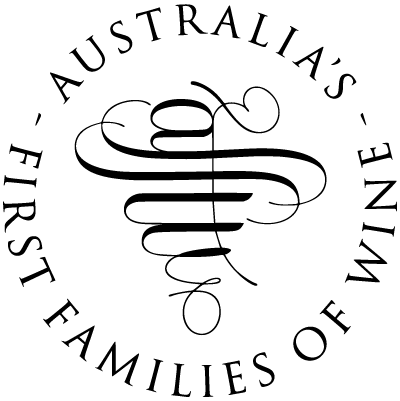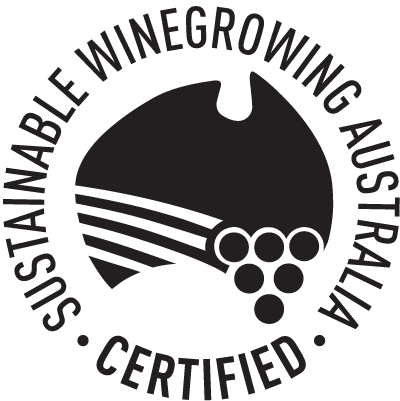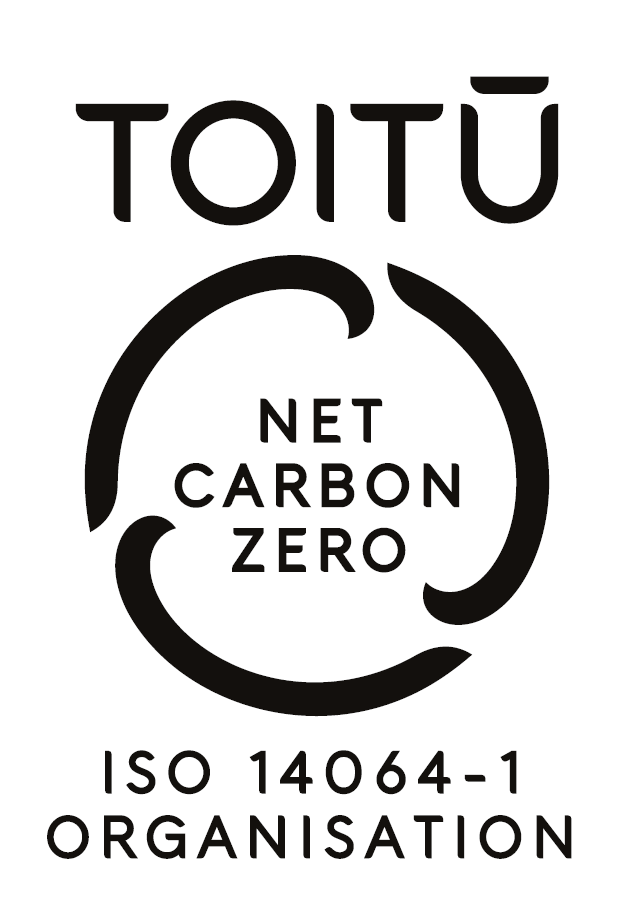
OUR LEGACY
Founded in 1925 by the Purbrick family, Tahbilk is Victoria's oldest family-owned winery. Here's the story of its beginnings...
1860-1890
The first plantings and start of 'Tabilk Vineyard' “To get gold, you need only sink about eighteen inches and plant vines.”
- Lindsey Brown

Harvest c. 1890’s Hand Harvested Grapes with Tin Buckets.
Harvest was a tough job, carrying tin buckets with leather straps to hand harvest each grape. However, the reward was usually worth the labour.

The Vintage Team c.1885 : Pickers, bucket boys and cellar hands, with Francois Coueslant standing alongside the drayman on the left.
It took a small village to make wine produced from Tahbilk. Fortified wine made up the majority of Australia's export market at this time however, Tahbilk produced table and fortified wine as well as brandy.
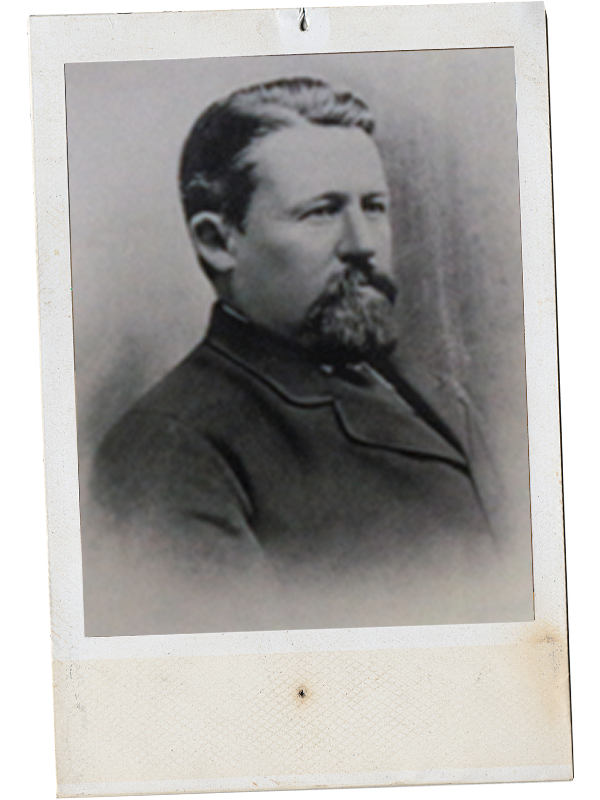
Francios Coueslant c 1885 Tahbilk’s General Manager and Chief Winemaker from 1877-1886.
John Pinney Bear, chief director of Tabilk Vineyards, ran the winery from a distance spending time in Melbourne and London. Almost all instruction to the general manager was sent through written correspondence. Coueslant and Pinney Bear had conflicting ideas of how the vineyard should be run. One thing they did agree on was that the winery and brand name needed to change from Tabilk Vineyards to Chateau Tahbilk and this occurred in 1877.

John Pinney Bear c. 1875 One of the founding entreprenueurs that established Tabilk Vineyards.
John Pinney Bear, took over his father's business, Bear & Son upon his death in 1851. John Pinney Bear lived a prosporous life, serving as director of Tabilk Vineyards, the National Bank as well as the Legislative Council in London. John Pinney Bear also managed the distribution of Tahbilk wine overseas. John Pinney Bear returned to Tahbilk in 1889 and died soon after. This sparked a number of less-than-ideal events for Chateau Tahbilk.
1890-1925
After a decline in trade of the Victorian Wine Industry, as well as the spread of Phylloxera devastating Australian Vineyards, Malcolm d’Arblay Burney, concentrated on the quality of product. Burney instilled fining practices; similar practices are still used to this day.
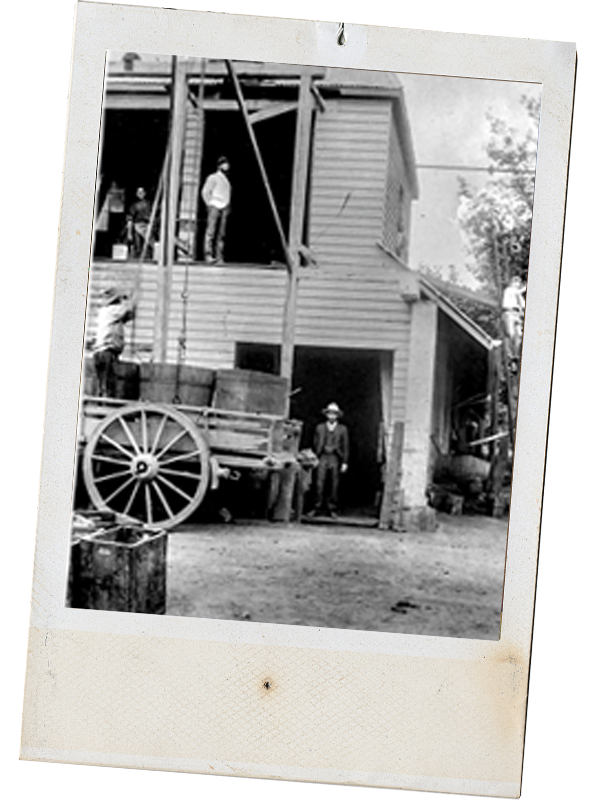
Vintage time: William Wilson supervising from the ground floor door of the tower while Joseph Gassies waits on the second level for the barrel to be raised. c 1896
Winemaking was conducted very differently from the current methods. Winemakers utilised gravity to crush the grapes and the tower was built to enhance the process. Grapes were brought to the bottom of the tower, pulled up to the second level to be crushed. Fermentation took place on ground level before the fermented juice was transferred to the underground cellars.
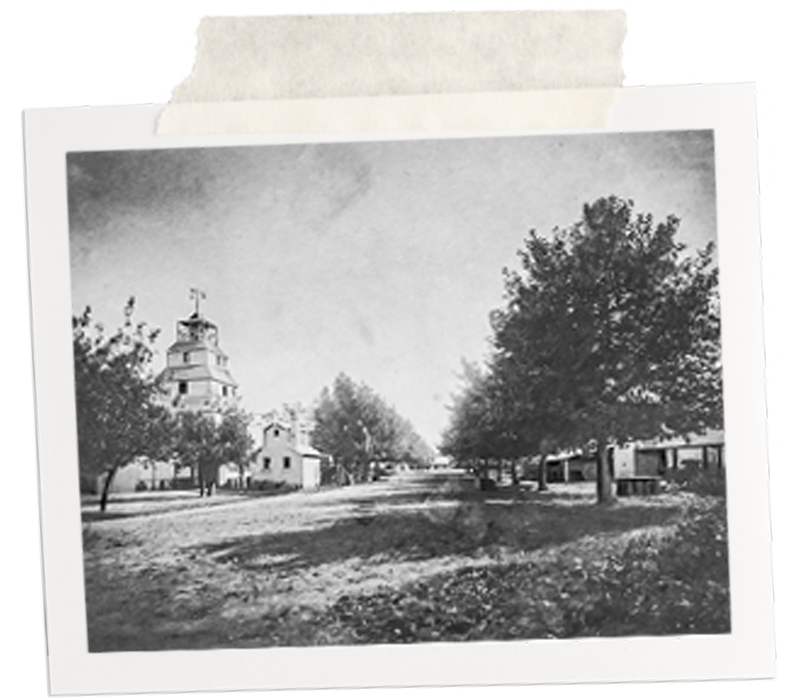
Cellar yard and tower c. 1890
Like all things what goes up must come down. Whilst Chateau Tahbilk had experienced a golden age of production, there was an economic downturn looming. Coupled with the effect of Phylloxera spreading throughout Victoria, death of John Pinney Bear in 1889 and departure of Francois Coueslant in 1886 production at Chateau Tahbilk began to decline.

Overview of the Tahbilk Vineyards c. 1903
An overlook of Tahbilk Vineyards, smaller trellised vines in comparison to the vines as they are now. The Victorian Wine Industry was starting to feel the effects of the phylloxera blight and slower international trade.
1925-1960
The Purbrick Family Purchase
Reginald Purbrick, after enjoying a glass of Chateau Tahbilk Brandy heard that the property was for sale and bought it. But what to do with the property was the question?

Reginald Purbrick c. 1923
Reginald Purbrick is best characterised as a risk-taker who was ruthless in his ambitions and his business dealings. Reginald was through and through an entrepreneur.
After several successes at local agriculture shows, Reginald Purbrick closed the exisiting company, The Chateau Tahbilk Proprietary Limited and a new company, Tahbilk Proprietary Limited was born. Reginald's son Eric became the sole owner as well as chief winemaker.
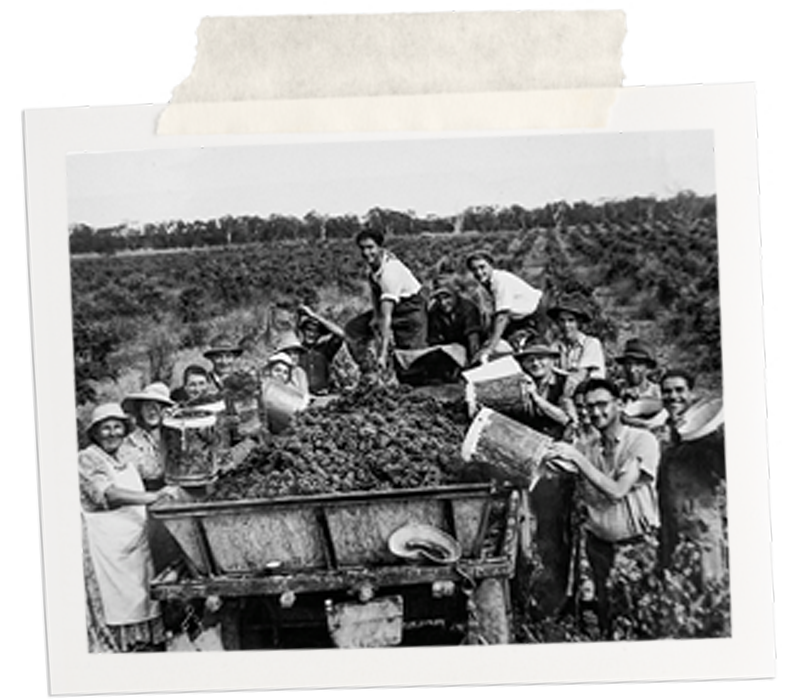
Vintage - Pickers on the loaded dray c.1950
Reginald had great visions for the Farm, one vision was to rip up all the vines and sell the land to dairy farmers however it was Eric that had the passion to maintain the vineyard.
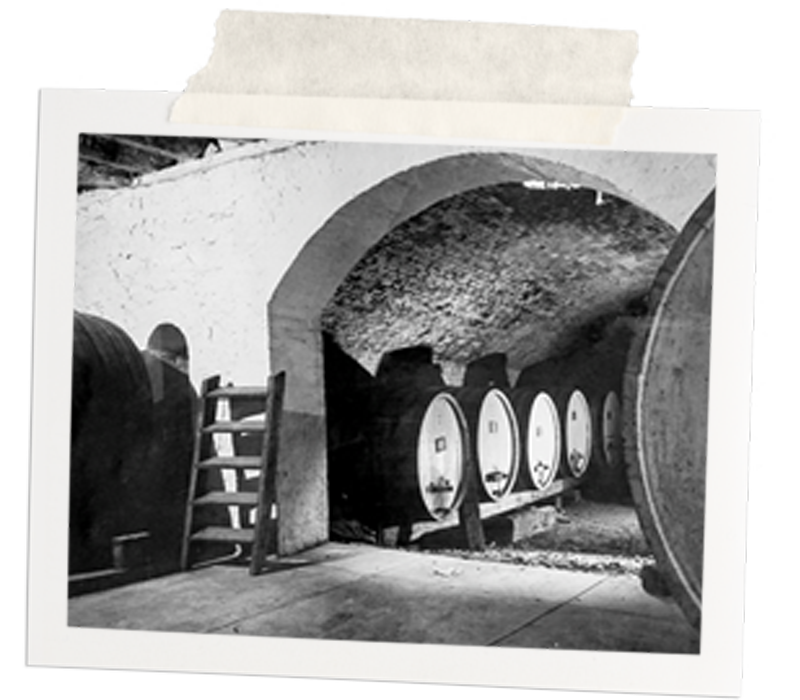
The New Cellar c.1951 (Photographer Cliff Bottomley)
The New Cellar constructed in 1875, not only stored oak barrels, but served as a bottling line as well. To this day Tahbilk Estate reds will spend at least 18 months in the undergound cellar's barrels.
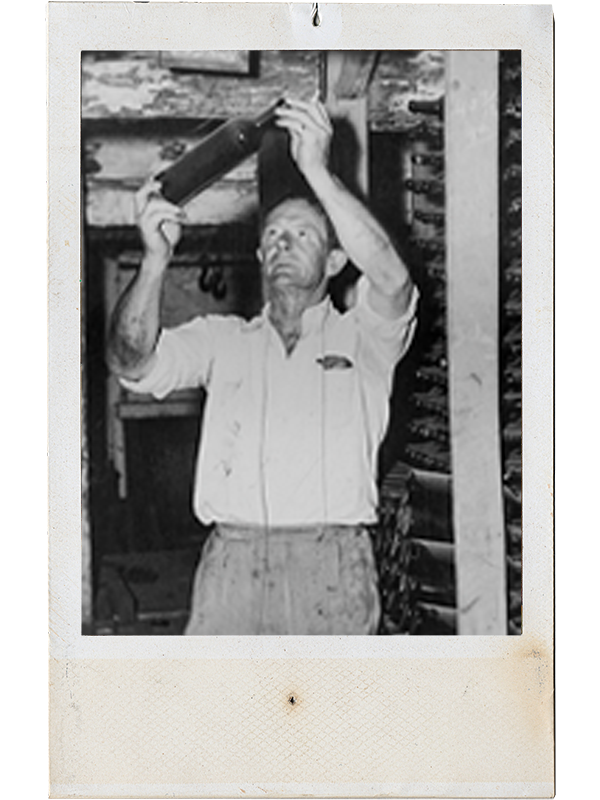
Eric Stevens Purbrick c. 1950s
After a number of successful vintages due to favourable growing conditions, Eric convinced his father to keep the vineyard in operation and as a result took over its management. Eric with no winemaking experience himself, initially relying upon vignerons in the local area to rebuild the brand and estate that is Chateau Tahbilk.
1960-1980
Changing of the Guard: Eric, John & Alister. The 70's & 80's brought three generations of Purbrick family members into the family business.
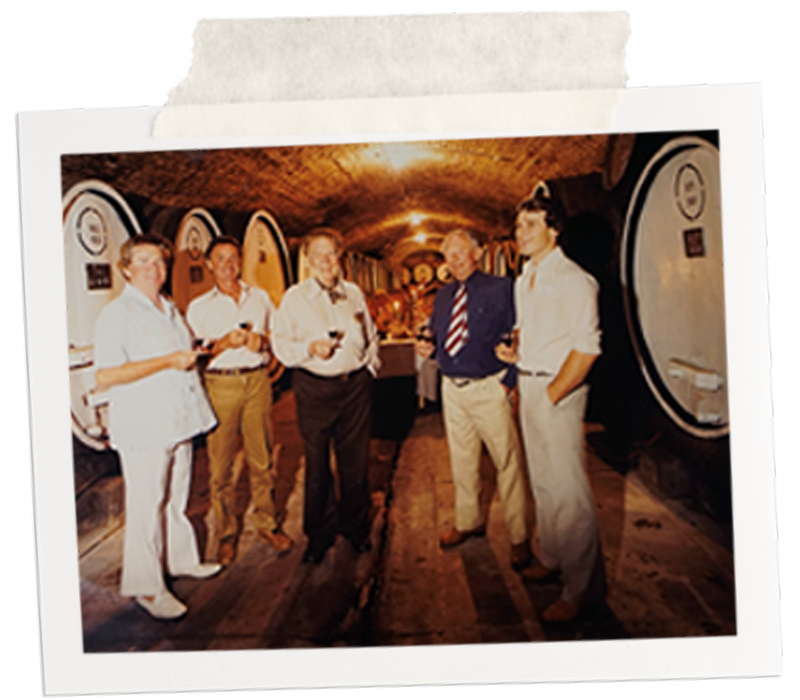
Eric, John and Alister c 1981
Celebrating at the Rhinecastle dinner in the underground cellar are from left Peter Walker, John Purbrick, Johnnie Walker, Eric Stevens Purbrick and Alister Purbrick At this time, Eric and John served as directors, and Alister was Cheif Executive Officer and Chief Winemaker.

George Comi and John Purbrick unloading grapes c.1973 (Photographer: Rob Middenway)
George Comi worked at Tahbilk Winery for nearly 50 years. Eventually working his way up to the role of Winemaker and Cellar Manager. We credit Comi with modernising the cellar and processes we still use today.
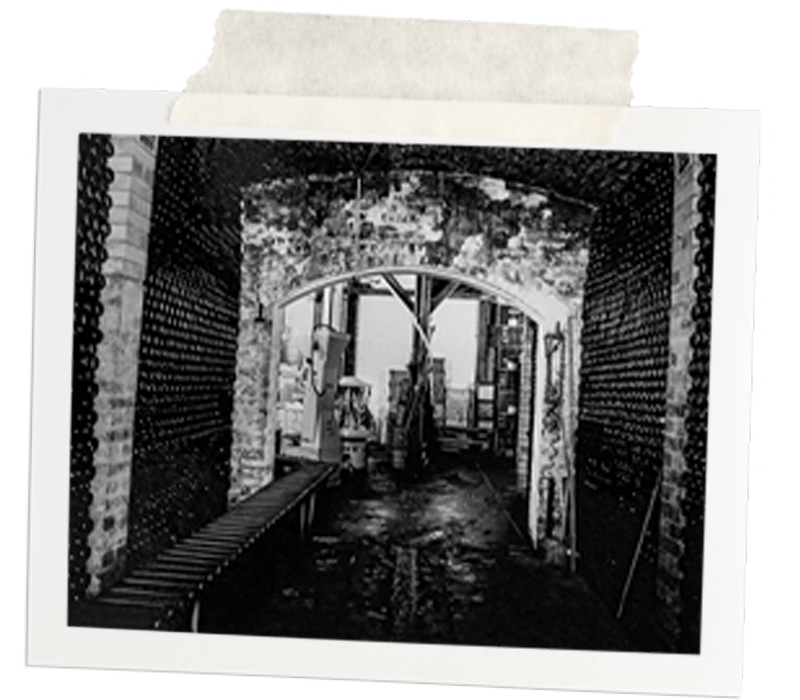
Underground Cellar - Cement floor, electric light, wine identification slates on the painted barrel fronts and cobwebs on the roof. c.1970
After fermentation, the next step in a red wines’ journey is maturation. There is a combination of French and American Oak barrels in the underground cellar. However, many barrels have minimal oak flavours due to their age. This allows the unique fruit characters derived from the grapes grown at Tahbilk Estate to be the dominant characters of Tahbilk reds.
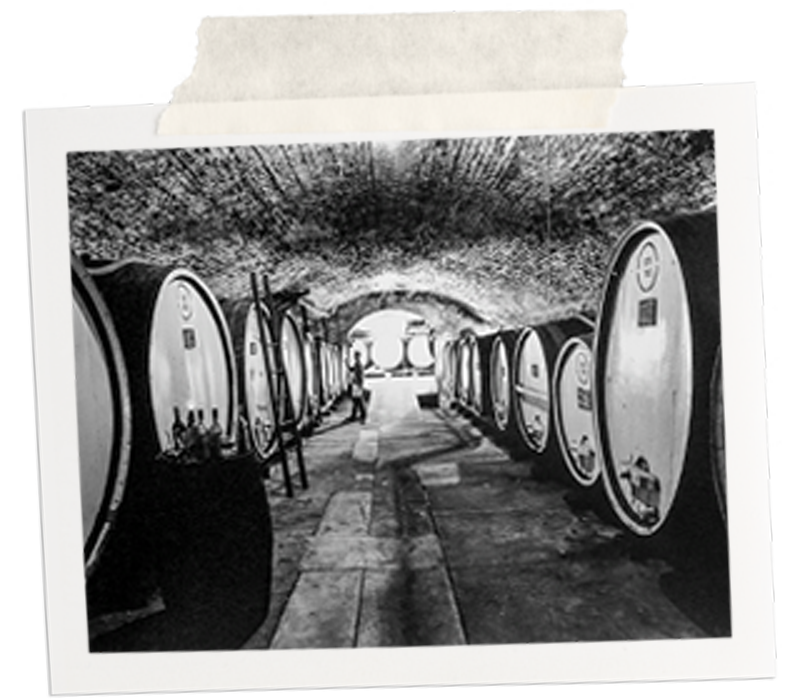
George Comi and John Purbrick unloading grapes c.1973 (Photographer: Rob Middenway)
George Comi worked at Tahbilk Winery for nearly 50 years. Eventually working his way up to the role of Winemaker and Cellar Manager. We credit Comi with modernising the cellar and processes we still use today.
1980-2000
The Next Generation of Wine Making & Management; Alister Purbrick. Under 4th Generation Alister Purbrick's leadership Tahbilk took the next step forward, embracing market trends whilst maintaining Tahbilk's legacy
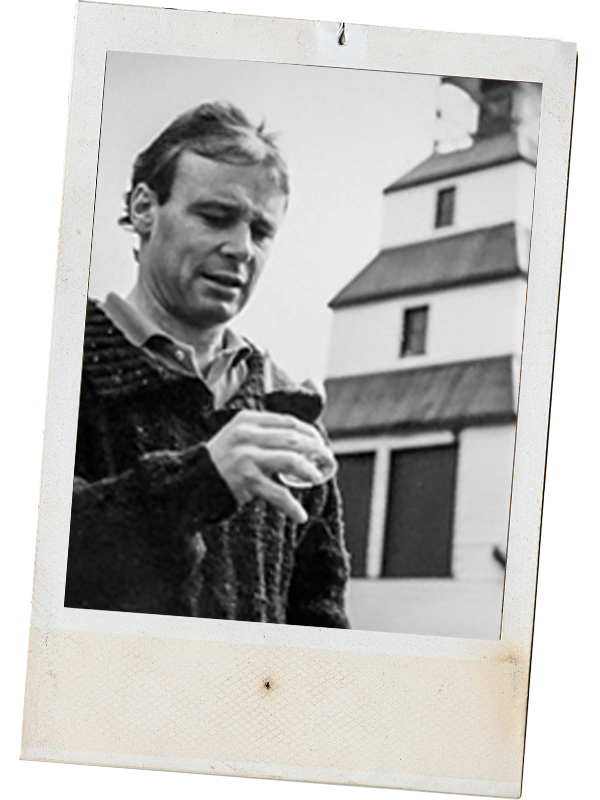
Alister Purbrick, 4th Generation of Purbrick Family. C 1980's
Encouraged by his father John, Alister became the first qualified Purbrick wine maker. Alister graduated from Roseworthy Agricultural college in 1975 and worked vintages in Coonawarra and Mildura before returning to Tahbilk in April 1978.
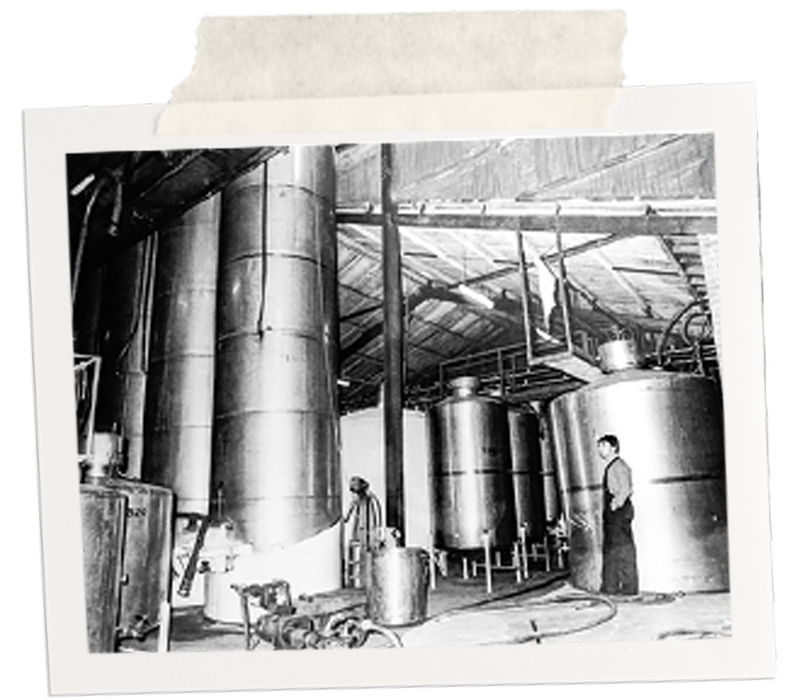
Alister installs stainless steel tanks at Tahbilk which were ready for the 1979 vintage c. 1980's
The wine market constantly experiences dips, troughs, fads and changes. Alister saw the market favouring more fruit forward whites. Oak typically imparts flavour to a wine however stainless-steel does not. Because of this Alister decided, alongside his father John, to invest in building the new cellars; the new home to the more modern stainless-steel tanks for white wine production.
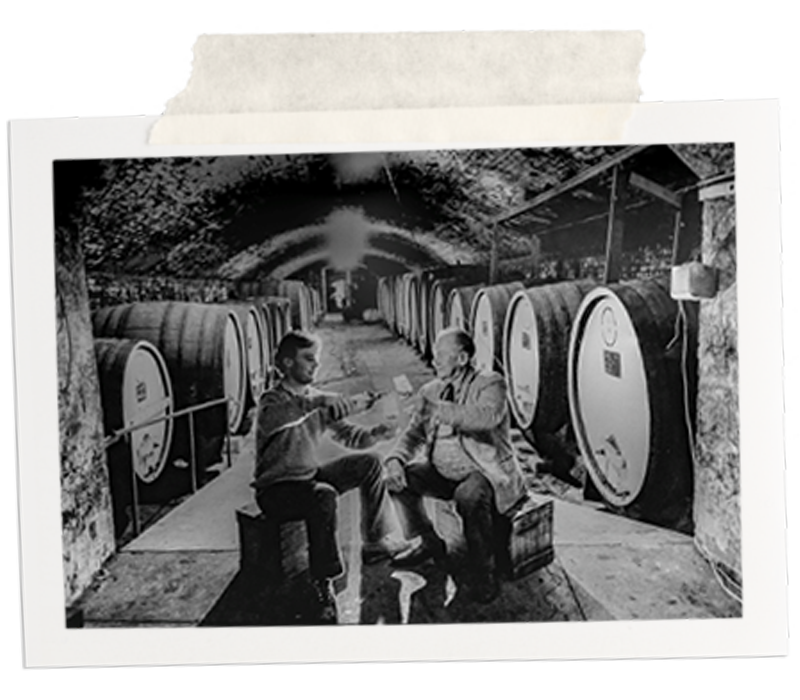
Alister and Eric share a glass in the 1875 cellar c. 1985
Eric, Alister’s grandfather, passed on his passion for traditional winemaking. Alister embraced this tradition which continues to this day, as well as adopting modern technology. Eric was a distant figure when Alister was growing up. In those days children were "seen but not heard". But on his return to Tahbilk, and in the absence of his father, John, Alister developed a very close, loving relationship with his grandfather and relied on his advice on best management practices, export and domestic sales... on everything except winemaking.
2000-2025
Continuing the Legacy: The 5th Generation, Hayley Purbrick entered the business in early 2009. With Hayley’s guidance, the focus was on continuing a sustainable legacy for future generations to come.

Hayley and Alister sitting on the window of cellar door c. 2019 4th and 5th Generation.
Alister's careful investment in the business; modernising winemaking yet still adhering to the practices of the golden age, paired well with Hayley’s interest in sustainability. Hayley saw the incoming effect of Climate Change. To help mitigate factors and jump ahead of the curve, Hayley organised Tahbilk's second carbon audit in 2012 & implemented changes at the winery to decrease it’s carbon footprint. As a result, Tahbilk Winery became accredited carbon neutral in 2013.
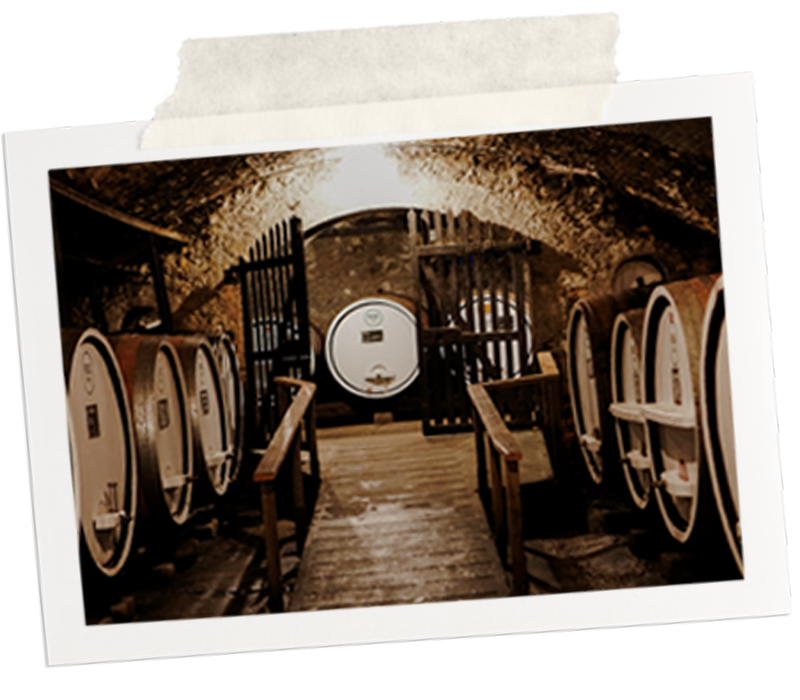
The underground cellars s c. 2019
An integral part of the family's vision and legacy is to hand over the estate to the next generation in a better condition than it started with. Under the guidance of the Purbrick family and in the face of changing winemaking styles and trends, Tahbilk's winemaking has remained the way it has for years, continuing to deliver wines of true provenance and reflective of each vintage.
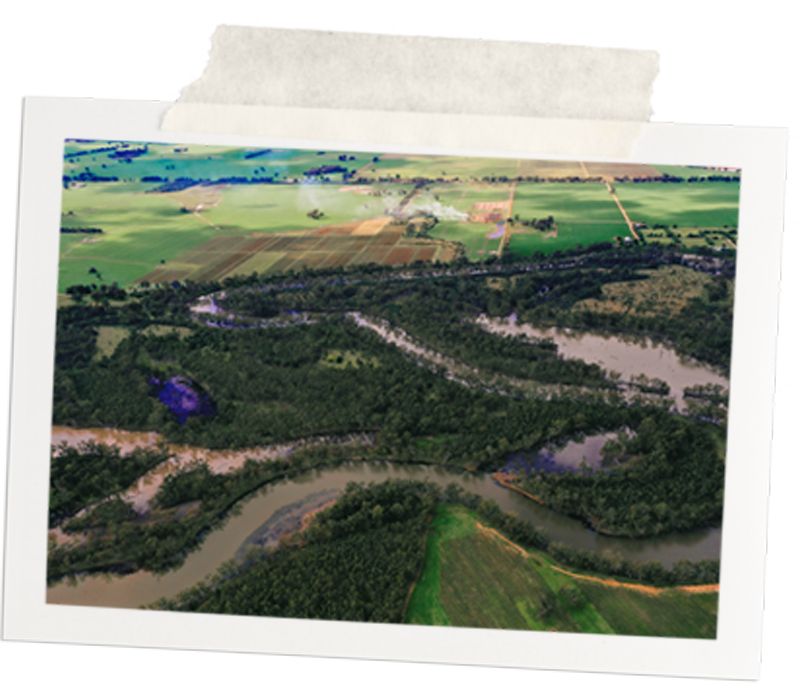
Aerial view of the tabilk-tabilk wetlands c. 2020
The tabilk-tabilk wetlands are an integral part of the nature of the estate and how it influences the quality of our vineyards. Nagambie Lakes is 1 of only 8 wine regions in the world whereby water has a dramatic cooling influence over its climate and thus the grapes we grow.
More vintages of history are ready to be uncorked...



